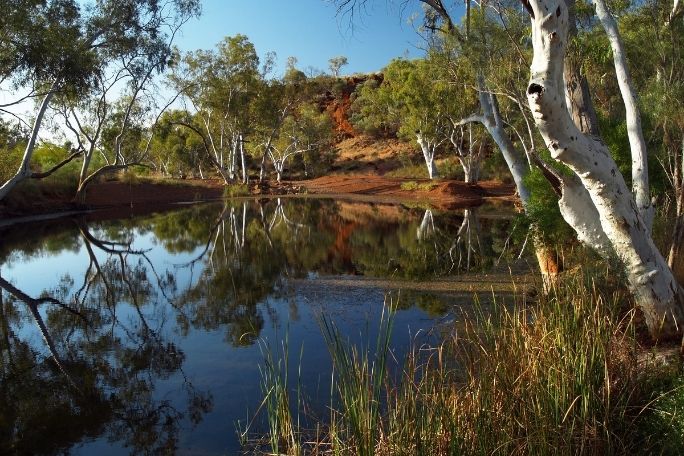Lesson summary
Students explore how trees interact with the non-living things (elements) in their environment. They begin by thinking about and sharing the ways they personally interact with trees. Students then work in groups to investigate how trees interact with one element in our environment, choosing from air, water, light, fire and the earth. They work in their groups to research this factor and its relationship to trees before communicating their research through a jigsaw sharing strategy. Finally, students work independently or collaboratively to create posters for Schools Tree Day that share the results of their research.
Learning intentions:
Students will...
- understand why trees are important
- recognise some of the ways that trees interact with the elements.
Success criteria:
Students can...
- conduct research into the elements and how they interact with trees
- share the results of their research with their peers
- plan and create posters to communicate how trees interact with the elements and how we can look after the elements and the trees
Lesson guides and printables
Lesson details
Curriculum Mapping
Australian Curriculum content descriptions:
Year 4 Science:
- Living things depend on each other and the environment to survive (ACSSU073)
- With guidance, plan and conduct scientific investigations to find answers to questions, considering the safe use of appropriate materials and equipment (ACSIS065)
- Represent and communicate observations, ideas and findings using formal and informal representations (ACSIS071)
Year 5 Science:
- Living things have structural features and adaptations that help them to survive in their environment (ACSSU043)
- Identify, plan and apply the elements of scientific investigations to answer questions and solve problems using equipment and materials safely and identifying potential risks (ACSIS086)
- Communicate ideas, explanations and processes using scientific representations in a variety of ways, including multi-modal texts (ACSIS093)
Year 6 Science:
- The growth and survival of living things are affected by physical conditions of their environment (ACSSU094)
- Identify, plan and apply the elements of scientific investigations to answer questions and solve problems using equipment and materials safely and identifying potential risks (ACSIS103)
- Communicate ideas, explanations and processes using scientific representations in a variety of ways, including multi-modal texts (ACSIS110)
Syllabus outcomes: ST2-11LW, ST2-4WS, ST3-10LW, ST3-4WS, ST3-11LW.
General capabilities: Critical and Creative Thinking.
Cross-curriculum priority: Sustainability OI.2, OI.9.
Relevant parts of Year 4 Science achievement standards: Students describe relationships that assist the survival of living things and sequence key stages in the life cycle of a plant or animal. They describe ways to conduct investigations and use formal and informal ways to communicate their observations and findings.
Relevant parts of Year 5 Science achievement standards: Students analyse how the form of living things enables them to function in their environments and communicate their ideas and findings using multimodal texts.
Relevant parts of Year 6 Science achievement standards: Students describe and predict the effect of environmental changes on individual living things. They collect, organise and interpret their data, and construct multimodal texts to communicate ideas, methods and findings.
This lesson is part of the wider unit of work Schools Tree Day – Primary.
Time required: 120 mins.
Level of teacher scaffolding: Medium – oversee discussions and group activities, lead students in the poster-making task.
Resources required
- Devices for conducting online research
- Devices for taking photos – OPTIONAL
- Factsheets:
- Online Search Strategies
- Poster making materials
- Student Worksheet – one copy per student.
Skills
This lesson is designed to build students’ competencies in the following skills:
- Collaboration
- Communication
- Creativity
- Critical thinking
Additional info
Following this lesson is an ideal way for students to participate in Planet Ark’s Schools Tree Day – the largest nature-care event in Australian schools. You and your students will join thousands of amazing teachers in making a difference, fostering a child’s love of nature and creating positive environmental change. So, get growing! It only takes a minute to register for Schools Tree Day.


Welcome back!
Don't have an account yet?
Log in with:
By signing up to Cool.org you consent and agree to Cool's privacy policy to
store, manage and process your personal information. To read more, please see
our privacy policy here(Opens in new tab).
Create your free Cool.org account.
Many of our resources are free, with an option to upgrade to Cool+ for premium content.
Already have an account?
Sign up with:
By signing up to Cool.org you consent and agree to Cool's privacy policy to
store, manage and process your personal information. To read more, please see
our privacy policy here(Opens in new tab).